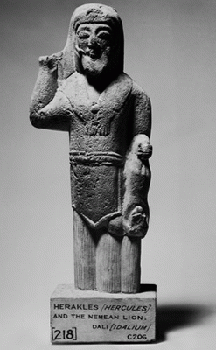American Journal of Archaeology | The Journal of the Archaeological Institute of America
You are here
Master of the Lion: Representation and Hybridity in Cypriote Sanctuaries
January 2008 (112.1)
Master of the Lion: Representation and Hybridity in Cypriote Sanctuaries
The complexity of cultural exchange witnessed in the archaeological record of ancient Cyprus and its impact on the iconographical repertoire of divine images dedicated in its sanctuaries requires a more nuanced theoretical model than those currently in use. In particular, artistic influences broadly defined as Near Eastern, Egyptian, or Greek have often been isolated as evidence of ethnic division across the religious landscape of Cyprus, even within the same sanctuary. As a result, many Cypriote sanctuaries are interpreted as host to a pantheon of foreign and local divine personalities. Such an interpretation has proven especially problematic in the case of one divine type that features a male figure clad in a lion skin, mastering a small lion and brandishing a club. Rather than privileging foreign parts over the more culturally meaningful whole, this article considers the value (and validity) of postcolonial theory as a model for examining the relationship between image and identity in Cypriote religion. While postcolonial critiques traditionally function within a modern sociopolitical context, recent scholarship has highlighted the relevance of postcolonial concepts such as “hybridity,” “middle ground,” and “third space” for the interpretation of archaeological data in ancient zones of contact such as Cyprus. In the case of Cypriote divine iconography during the first millennium B.C.E., a postcolonial approach suggests additional ways of thinking about novel identities produced in the context of local sanctuaries.
Master of the Lion: Representation and Hybridity in Cypriote Sanctuaries
By Derek B. Counts
American Journal of Archaeology Vol. 112, No. 1 (January 2008), pp. 3–27
DOI: 10.3764/aja.112.1.3
© 2008 Archaeological Institute of America


